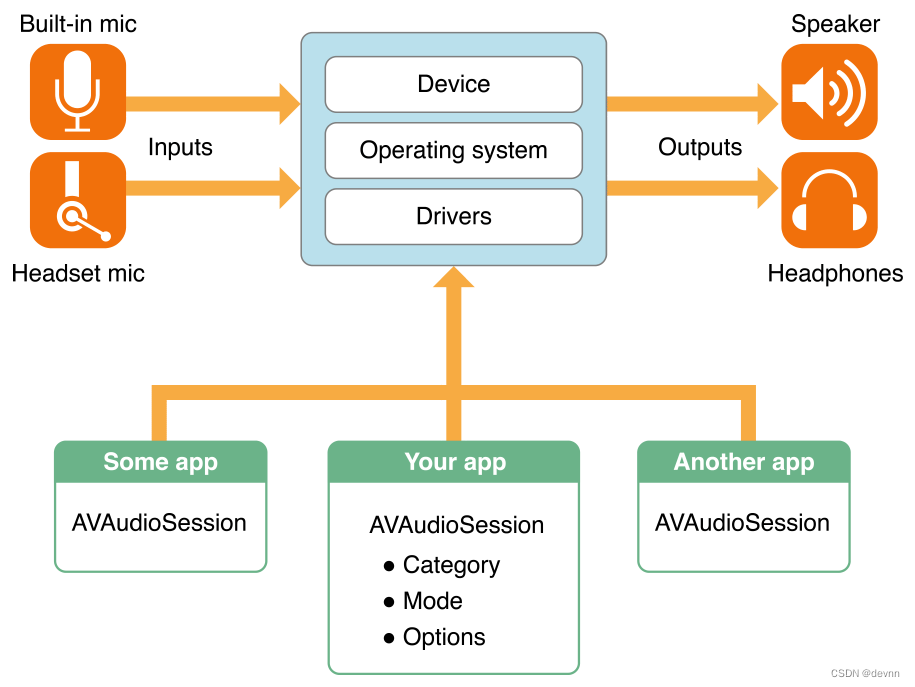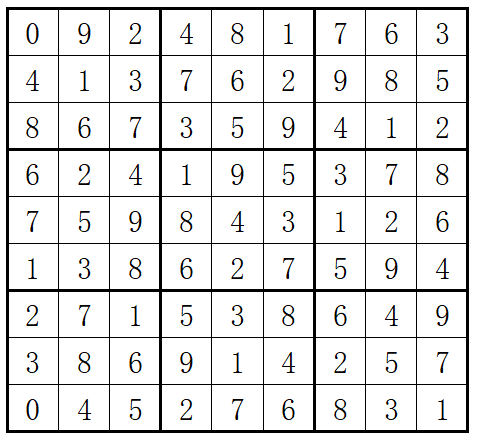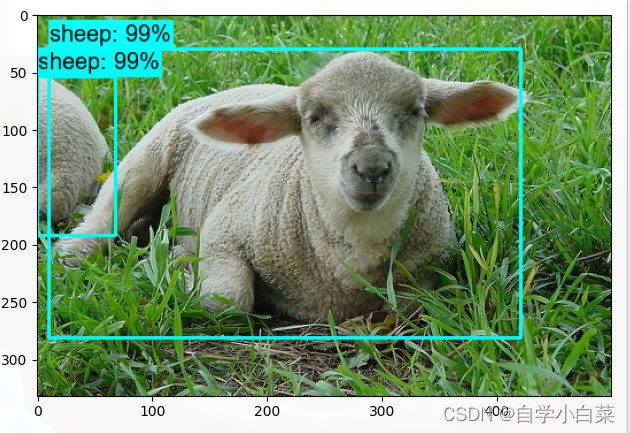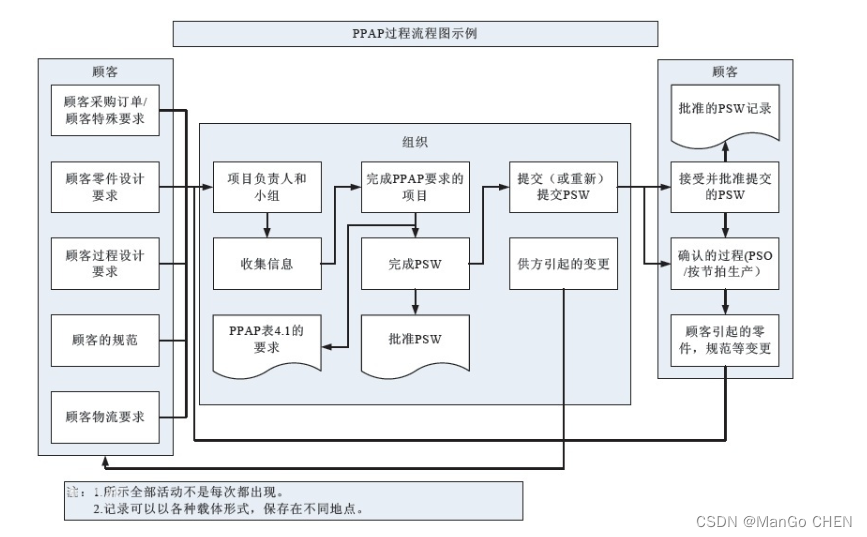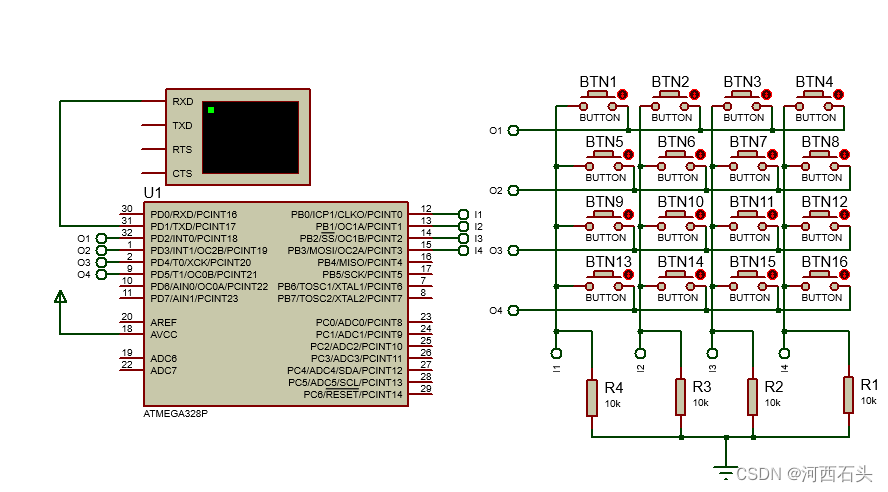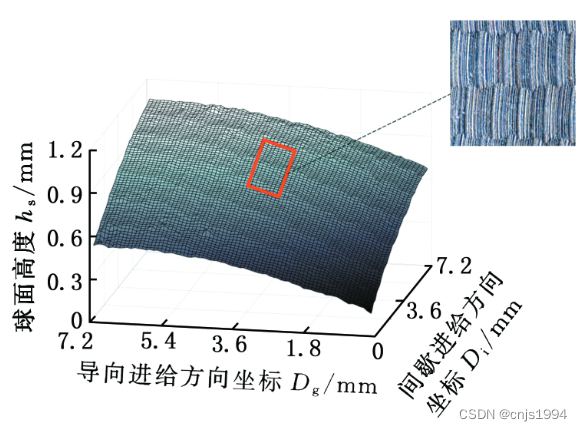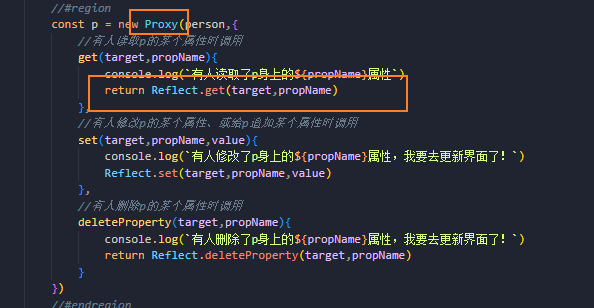七十六、井字棋
原文:http://inventwithpython.com/bigbookpython/project76.html

井字棋是一种在3 × 3网格上玩的经典纸笔游戏。玩家轮流放置 X 或 O 标记,试图连续获得三个。大多数井字棋都以平局告终,但如果你的对手不小心,你也有可能智胜他们。
运行示例
当您运行tictactoe.py时,输出将如下所示:
Welcome to Tic-Tac-Toe!
| | 1 2 3
-+-+-
| | 4 5 6
-+-+-
| | 7 8 9
What is X's move? (1-9)
> 1
X| | 1 2 3
-+-+-
| | 4 5 6
-+-+-
| | 7 8 9
What is O's move? (1-9)
`--snip--`
X|O|X 1 2 3
-+-+-
X|O|O 4 5 6
-+-+-
O|X|X 7 8 9
The game is a tie!
Thanks for playing!
工作原理
为了在这个程序中表示井字棋棋盘,我们使用了一个字典,用键'1'到'9'来表示棋盘上的空格。数字空间的排列方式与手机键盘相同。本词典中的值是代表球员标记的字符串'X'或'O'和代表空白的' '。
"""Tic-Tac-Toe, by Al Sweigart email@protected
The classic board game.
This code is available at https://nostarch.com/big-book-small-python-programming
Tags: short, board game, game, two-player"""
ALL_SPACES = ['1', '2', '3', '4', '5', '6', '7', '8', '9']
X, O, BLANK = 'X', 'O', ' ' # Constants for string values.
def main():
print('Welcome to Tic-Tac-Toe!')
gameBoard = getBlankBoard() # Create a TTT board dictionary.
currentPlayer, nextPlayer = X, O # X goes first, O goes next.
while True: # Main game loop.
# Display the board on the screen:
print(getBoardStr(gameBoard))
# Keep asking the player until they enter a number 1-9:
move = None
while not isValidSpace(gameBoard, move):
print('What is {}\'s move? (1-9)'.format(currentPlayer))
move = input('> ')
updateBoard(gameBoard, move, currentPlayer) # Make the move.
# Check if the game is over:
if isWinner(gameBoard, currentPlayer): # Check for a winner.
print(getBoardStr(gameBoard))
print(currentPlayer + ' has won the game!')
break
elif isBoardFull(gameBoard): # Check for a tie.
print(getBoardStr(gameBoard))
print('The game is a tie!')
break
# Switch turns to the next player:
currentPlayer, nextPlayer = nextPlayer, currentPlayer
print('Thanks for playing!')
def getBlankBoard():
"""Create a new, blank tic-tac-toe board."""
# Map of space numbers: 1|2|3
# -+-+-
# 4|5|6
# -+-+-
# 7|8|9
# Keys are 1 through 9, the values are X, O, or BLANK:
board = {}
for space in ALL_SPACES:
board[space] = BLANK # All spaces start as blank.
return board
def getBoardStr(board):
"""Return a text-representation of the board."""
return '''
{}|{}|{} 1 2 3
-+-+-
{}|{}|{} 4 5 6
-+-+-
{}|{}|{} 7 8 9'''.format(board['1'], board['2'], board['3'],
board['4'], board['5'], board['6'],
board['7'], board['8'], board['9'])
def isValidSpace(board, space):
"""Returns True if the space on the board is a valid space number
and the space is blank."""
return space in ALL_SPACES and board[space] == BLANK
def isWinner(board, player):
"""Return True if player is a winner on this TTTBoard."""
# Shorter variable names used here for readablility:
b, p = board, player
# Check for 3 marks across 3 rows, 3 columns, and 2 diagonals.
return ((b['1'] == b['2'] == b['3'] == p) or # Across top
(b['4'] == b['5'] == b['6'] == p) or # Across middle
(b['7'] == b['8'] == b['9'] == p) or # Across bottom
(b['1'] == b['4'] == b['7'] == p) or # Down left
(b['2'] == b['5'] == b['8'] == p) or # Down middle
(b['3'] == b['6'] == b['9'] == p) or # Down right
(b['3'] == b['5'] == b['7'] == p) or # Diagonal
(b['1'] == b['5'] == b['9'] == p)) # Diagonal
def isBoardFull(board):
"""Return True if every space on the board has been taken."""
for space in ALL_SPACES:
if board[space] == BLANK:
return False # If any space is blank, return False.
return True # No spaces are blank, so return True.
def updateBoard(board, space, mark):
"""Sets the space on the board to mark."""
board[space] = mark
if __name__ == '__main__':
main() # Call main() if this module is run, but not when imported.
探索程序
试着找出下列问题的答案。尝试对代码进行一些修改,然后重新运行程序,看看这些修改有什么影响。
- 如果把第 7 行的
X, O, BLANK = 'X', 'O', ' '改成X, O, BLANK = 'X', 'X', ' '会怎么样? - 如果把第 95 行的
board[space] = mark改成board[space] = X会怎么样? - 如果把第 50 行的
board[space] = BLANK改成board[space] = X会怎么样?
七十七、汉诺塔
原文:http://inventwithpython.com/bigbookpython/project77.html

汉诺塔是一款移动堆叠的益智游戏,有三根柱子,你可以在上面堆叠不同大小的圆盘。游戏的目标是将一个塔盘移到另一个柱子上。但是,一次只能移动一个磁盘,较大的磁盘不能放在较小的磁盘上。找出某种模式将有助于你解决这个难题。你能发现它吗?(提示:尝试将TOTAL_DISKS变量设置为3或4,以先解决一个更简单的版本。)
运行示例
当您运行towerofhanoi.py时,输出将如下所示:
The Tower of Hanoi, by Al Sweigart email@protected
Move the tower of disks, one disk at a time, to another tower. Larger
disks cannot rest on top of a smaller disk.
More info at https://en.wikipedia.org/wiki/Tower_of_Hanoi
|| || ||
@email@protected || ||
@@email@protected@ || ||
@@@email@protected@@ || ||
@@@@email@protected@@@ || ||
@@@@@email@protected@@@@ || ||
A B C
Enter the letters of "from" and "to" towers, or QUIT.
(e.g. AB to moves a disk from tower A to tower B.)
> ab
|| || ||
|| || ||
@@email@protected@ || ||
@@@email@protected@@ || ||
@@@@email@protected@@@ || ||
@@@@@email@protected@@@@ @email@protected ||
A B C
Enter the letters of "from" and "to" towers, or QUIT.
(e.g. AB to moves a disk from tower A to tower B.)
`--snip--`
工作原理
表示塔的数据结构是一个整数列表。每个整数都是磁盘的大小。列表中的第一个整数代表底部磁盘,最后一个整数代表顶部磁盘。例如,[5, 4, 2]将代表以下塔:
||
||
@@email@protected@
@@@@email@protected@@@
@@@@@email@protected@@@@
Python 的append()和pop()列表方法可以分别在列表末尾添加和删除值。正如someList[0]和someList[1]允许我们访问列表中的第一个和第二个值一样,Python 允许我们使用负索引来访问列表末尾的值,使用像someList[-1]和someList[-2]这样的表达式,它们分别访问列表中的最后一个和倒数第二个值。这对于查找当前位于塔顶的磁盘非常有用。
"""The Tower of Hanoi, by Al Sweigart email@protected
A stack-moving puzzle game.
This code is available at https://nostarch.com/big-book-small-python-programming
Tags: short, game, puzzle"""
import copy
import sys
TOTAL_DISKS = 5 # More disks means a more difficult puzzle.
# Start with all disks on tower A:
COMPLETE_TOWER = list(range(TOTAL_DISKS, 0, -1))
def main():
print("""The Tower of Hanoi, by Al Sweigart email@protected
Move the tower of disks, one disk at a time, to another tower. Larger
disks cannot rest on top of a smaller disk.
More info at https://en.wikipedia.org/wiki/Tower_of_Hanoi
"""
)
# Set up the towers. The end of the list is the top of the tower.
towers = {'A': copy.copy(COMPLETE_TOWER), 'B': [], 'C': []}
while True: # Run a single turn.
# Display the towers and disks:
displayTowers(towers)
# Ask the user for a move:
fromTower, toTower = askForPlayerMove(towers)
# Move the top disk from fromTower to toTower:
disk = towers[fromTower].pop()
towers[toTower].append(disk)
# Check if the user has solved the puzzle:
if COMPLETE_TOWER in (towers['B'], towers['C']):
displayTowers(towers) # Display the towers one last time.
print('You have solved the puzzle! Well done!')
sys.exit()
def askForPlayerMove(towers):
"""Asks the player for a move. Returns (fromTower, toTower)."""
while True: # Keep asking player until they enter a valid move.
print('Enter the letters of "from" and "to" towers, or QUIT.')
print('(e.g. AB to moves a disk from tower A to tower B.)')
response = input('> ').upper().strip()
if response == 'QUIT':
print('Thanks for playing!')
sys.exit()
# Make sure the user entered valid tower letters:
if response not in ('AB', 'AC', 'BA', 'BC', 'CA', 'CB'):
print('Enter one of AB, AC, BA, BC, CA, or CB.')
continue # Ask player again for their move.
# Syntactic sugar - Use more descriptive variable names:
fromTower, toTower = response[0], response[1]
if len(towers[fromTower]) == 0:
# The "from" tower cannot be an empty tower:
print('You selected a tower with no disks.')
continue # Ask player again for their move.
elif len(towers[toTower]) == 0:
# Any disk can be moved onto an empty "to" tower:
return fromTower, toTower
elif towers[toTower][-1] < towers[fromTower][-1]:
print('Can\'t put larger disks on top of smaller ones.')
continue # Ask player again for their move.
else:
# This is a valid move, so return the selected towers:
return fromTower, toTower
def displayTowers(towers):
"""Display the current state."""
# Display the three towers:
for level in range(TOTAL_DISKS, -1, -1):
for tower in (towers['A'], towers['B'], towers['C']):
if level >= len(tower):
displayDisk(0) # Display the bare pole with no disk.
else:
displayDisk(tower[level]) # Display the disk.
print()
# Display the tower labels A, B, and C.
emptySpace = ' ' * (TOTAL_DISKS)
print('{0} A{0}{0} B{0}{0} C\n'.format(emptySpace))
def displayDisk(width):
"""Display a disk of the given width. A width of 0 means no disk."""
emptySpace = ' ' * (TOTAL_DISKS - width)
if width == 0:
# Display a pole segment without a disk:
print(emptySpace + '||' + emptySpace, end='')
else:
# Display the disk:
disk = '@' * width
numLabel = str(width).rjust(2, '_')
print(emptySpace + disk + numLabel + disk + emptySpace, end='')
# If the program is run (instead of imported), run the game:
if __name__ == '__main__':
main()
探索程序
试着找出下列问题的答案。尝试对代码进行一些修改,然后重新运行程序,看看这些修改有什么影响。
- 如果删除或注释掉第 73、74 和 75 行会发生什么?
- 如果把第 100 行的
emptySpace = ' ' * (TOTAL_DISKS - width)改成emptySpace = ' '会怎么样? - 如果把 102 行的
width == 0改成width != 0会怎么样?
七十八、脑筋急转弯
原文:http://inventwithpython.com/bigbookpython/project78.html

一块黄色的石头扔进蓝色的池塘会变成什么?英国有 7 月 4 日吗?医生怎么能 30 天不睡觉?不管你认为这些问题的答案是什么,你可能都错了。这个项目中的 54 个问题都是经过精心设计的,因此它们的答案简单、明显且容易误导人。找到真正的答案需要一些小聪明。
复制这本书的代码会破坏乐趣,因为你会看到答案,所以你可能想在看源代码之前下载并玩这个来自inventwithpython.com/trickquestions.py的游戏。
运行示例
当您运行trickquestions.py时,输出将如下所示:
Trick Questions, by Al Sweigart email@protected
Can you figure out the answers to these trick questions?
(Enter QUIT to quit at any time.)
Press Enter to begin...
`--snip--`
Question: 1
Score: 0 / 54
QUESTION: A 39 year old person was born on the 22nd of February. What year is their birthday?
ANSWER: 1981
Incorrect! The answer is: Their birthday is on February 22nd of every year.
Press Enter for the next question...
`--snip--`
Question: 2
Score: 0 / 54
QUESTION: If there are ten apples and you take away two, how many do you have?
ANSWER: Eight
Incorrect! The answer is: Two.
Press Enter for the next question...
`--snip--`
工作原理
QUESTIONS变量保存一个字典列表。每个字典代表一个单独的难题,并且有关键字'question'、'answer'和'accept'。'question'和'answer'的值分别是程序向玩家提出问题并给出答案时显示的字符串。'accept'键的值是一个字符串列表。如果玩家输入包含任何这些字符串的响应,它将被认为是正确的。这允许玩家输入自由格式的文本作为回复。该程序在检测他们何时提供了正确答案方面相当准确。
"""Trick Questions, by Al Sweigart email@protected
A quiz of several trick questions.
This code is available at https://nostarch.com/big-book-small-python-programming
Tags: large, humor"""
import random, sys
# QUESTIONS is a list of dictionaries, each dictionary represents a
# trick question and its answer. The dictionary has the keys 'question'
# (which holds the text of the question), 'answer' (which holds the text
# of the answer), and 'accept' (which holds a list of strings that, if
# the player's answer contains any of, they've answered correctly).
# (!) Try coming up with your own trick questions to add here:
QUESTIONS = [
{'question': "How many times can you take 2 apples from a pile of 10 apples?",
'answer': "Once. Then you have a pile of 8 apples.",
'accept': ['once', 'one', '1']},
{'question': 'What begins with "e" and ends with "e" but only has one letter in it?',
'answer': "An envelope.",
'accept': ['envelope']},
{'question': "Is it possible to draw a square with three sides?",
'answer': "Yes. All squares have three sides. They also have a fourth side.",
'accept': ['yes']},
{'question': "How many times can a piece of paper be folded in half by hand without unfolding?",
'answer': "Once. Then you are folding it in quarters.",
'accept': ['one', '1', 'once']},
{'question': "What does a towel get as it dries?",
'answer': "Wet.",
'accept': ['wet']},
{'question': "What does a towel get as it dries?",
'answer': "Drier.",
'accept': ['drier', 'dry']},
{'question': "Imagine you are in a haunted house full of evil ghosts. What do you have to do to stay safe?",
'answer': "Nothing. You're only imagining it.",
'accept': ['nothing', 'stop']},
{'question': "A taxi driver is going the wrong way down a one-way street. She passes ten cops but doesn't get a ticket. Why not?",
'answer': "She was walking.",
'accept': ['walk']},
{'question': "What does a yellow stone thrown into a blue pond become?",
'answer': "Wet.",
'accept': ['wet']},
{'question': "How many miles does must a cyclist bike to get to training?",
'answer': "None. They're training as soon as they get on the bike.",
'accept': ['none', 'zero', '0']},
{'question': "What building do people want to leave as soon as they enter?",
'answer': "An airport.",
'accept': ['airport', 'bus', 'port', 'train', 'station', 'stop']},
{'question': "If you're in the middle of a square house facing the west side with the south side to your left and the north side to your right, which side of the house are you next to?",
'answer': "None. You're in the middle.",
'accept': ['none', 'middle', 'not', 'any']},
{'question': "How much dirt is in a hole 3 meters wide, 3 meters long, and 3 meters deep?",
'answer': "There is no dirt in a hole.",
'accept': ['no', 'none', 'zero']},
{'question': "A girl mails a letter from America to Japan. How many miles did the stamp move?",
'answer': "Zero. The stamp was in the same place on the envelope the whole time.",
'accept': ['zero', '0', 'none', 'no']},
{'question': "What was the highest mountain on Earth the day before Mount Everest was discovered?",
'answer': "Mount Everest was still the highest mountain of Earth the day before it was discovered.",
'accept': ['everest']},
{'question': "How many fingers do most people have on their two hands?",
'answer': "Eight. They also have two thumbs.",
'accept': ['eight', '8']},
{'question': "The 4th of July is a holiday in America. Do they have a 4th of July in England?",
'answer': "Yes. All countries have a 4th of July on their calendar.",
'accept': ['yes']},
{'question': "Which letter of the alphabet makes honey?",
'answer': "None. A bee is an insect, not a letter.",
'accept': ['no', 'none', 'not']},
{'question': "How can a doctor go 30 days without sleep?",
'answer': "By sleeping at night.",
'accept': ['night', 'evening']},
{'question': "How many months have 28 days?",
'answer': "12\. All months have 28 days. Some have more days as well.",
'accept': ['12', 'twelve', 'all']},
{'question': "How many two cent stamps are in a dozen?",
'answer': "A dozen.",
'accept': ['12', 'twelve', 'dozen']},
{'question': "Why is it illegal for a person living in North Dakota to be buried in South Dakota?",
'answer': "Because it is illegal to bury someone alive.",
'accept': ['alive', 'living', 'live']},
{'question': "How many heads does a two-headed coin have?",
'answer': "Zero. Coins are just circular pieces of metal. They don't have heads.",
'accept': ['zero', 'none', 'no', '0']},
{'question': "What kind of vehicle has four wheels and flies?",
'answer': "A garbage truck.",
'accept': ['garbage', 'dump', 'trash']},
{'question': "What kind of vehicle has four wheels and flies?",
'answer': "An airplane.",
'accept': ['airplane', 'plane']},
{'question': "What five-letter word becomes shorter by adding two letters?",
'answer': "Short.",
'accept': ['short']},
{'question': "Gwen's mother has five daughters. Four are named Haha, Hehe, Hihi, and Hoho. What's the fifth daughter's name?",
'answer': "Gwen.",
'accept': ['gwen']},
{'question': "How long is a fence if there are three fence posts each one meter apart?",
'answer': "Two meters long.",
'accept': ['2', 'two']},
{'question': "How many legs does a dog have if you count its tail as a leg?",
'answer': "Four. Calling a tail a leg doesn't make it one.",
'accept': ['four', '4']},
{'question': "How much more are 1976 pennies worth compared to 1975 pennies?",
'answer': "One cent.",
'accept': ['1', 'one']},
{'question': "What two things can you never eat for breakfast?",
'answer': "Lunch and dinner.",
'accept': ['lunch', 'dinner', 'supper']},
{'question': "How many birthdays does the average person have?",
'answer': "One. You're only born once.",
'accept': ['one', '1', 'once' 'born']},
{'question': "Where was the United States Declaration of Independence signed?",
'answer': "It was signed at the bottom.",
'accept': ['bottom']},
{'question': "A person puts two walnuts in their pocket but only has one thing in their pocket five minutes later. What is it?",
'answer': "A hole.",
'accept': ['hole']},
{'question': "What did the sculptor make that no one could see?",
'answer': "Noise.",
'accept': ['noise']},
{'question': "If you drop a raw egg on a concrete floor, will it crack?",
'answer': "No. Concrete is very hard to crack.",
'accept': ['no']},
{'question': "If it takes ten people ten hours to build a fence, how many hours does it take five people to build it?",
'answer': "Zero. It's already built.",
'accept': ['zero', 'no', '0', 'already', 'built']},
{'question': "Which is heavier, 100 pounds of rocks or 100 pounds of feathers?",
'answer': "Neither. They weigh the same.",
'accept': ['neither', 'none', 'no', 'same', 'even', 'balance']},
{'question': "What do you have to do to survive being bitten by a poisonous snake?",
'answer': "Nothing. Only venomous snakes are deadly.",
'accept': ['nothing', 'anything']},
{'question': "What three consecutive days don't include Sunday, Wednesday, or Friday?",
'answer': "Yesterday, today, and tomorrow.",
'accept': ['yesterday', 'today', 'tomorrow']},
{'question': "If there are ten apples and you take away two, how many do you have?",
'answer': "Two.",
'accept': ['2', 'two']},
{'question': "A 39 year old person was born on the 22nd of February. What year is their birthday?",
'answer': "Their birthday is on February 22nd of every year.",
'accept': ['every', 'each']},
{'question': "How far can you walk in the woods?",
'answer': "Halfway. Then you are walking out of the woods.",
'accept': ['half', '1/2']},
{'question': "Can a man marry his widow's sister?",
'answer': "No, because he's dead.",
'accept': ['no']},
{'question': "What do you get if you divide one hundred by half?",
'answer': "One hundred divided by half is two hundred. One hundred divided by two is fifty.",
'accept': ['two', '200']},
{'question': "What do you call someone who always knows where their spouse is?",
'answer': "A widow or widower.",
'accept': ['widow', 'widower']},
{'question': "How can someone take a photo but not be a photographer?",
'answer': "They can be a thief.",
'accept': ['thief', 'steal', 'take', 'literal']},
{'question': "An electric train leaves the windy city of Chicago at 4pm on a Monday heading south at 100 kilometers per hour. Which way does the smoke blow from the smokestack?",
'answer': "Electric trains don't have smokestacks.",
'accept': ["don't", "doesn't", 'not', 'no', 'none']},
{'question': 'What is the only word that rhymes with "orange"?',
'answer': "Orange.",
'accept': ['orange']},
{'question': "Who is the U.S. President if the U.S. Vice President dies?",
'answer': "The current U.S. President.",
'accept': ['president', 'current', 'already']},
{'question': "A doctor gives you three pills with instructions to take one every half-hour. How long will the pills last?",
'answer': "One hour.",
'accept': ['1', 'one']},
{'question': "Where is there an ocean with no water?",
'answer': "On a map.",
'accept': ['map']},
{'question': "What is the size of a rhino but weighs nothing?",
'answer': "A rhino's shadow.",
'accept': ['shadow']},
{'question': "The clerk at a butcher shop is exactly 177 centimeters tall. What do they weigh?",
'answer': "The clerk weighs meat.",
'accept': ['meat']}]
CORRECT_TEXT = ['Correct!', 'That is right.', "You're right.",
'You got it.', 'Righto!']
INCORRECT_TEXT = ['Incorrect!', "Nope, that isn't it.", 'Nope.',
'Not quite.', 'You missed it.']
print('''Trick Questions, by Al Sweigart email@protected
Can you figure out the answers to these trick questions?
(Enter QUIT to quit at any time.)
''')
input('Press Enter to begin...')
random.shuffle(QUESTIONS)
score = 0
for questionNumber, qa in enumerate(QUESTIONS): # Main program loop.
print('\n' * 40) # "Clear" the screen.
print('Question:', questionNumber + 1)
print('Score:', score, '/', len(QUESTIONS))
print('QUESTION:', qa['question'])
response = input(' ANSWER: ').lower()
if response == 'quit':
print('Thanks for playing!')
sys.exit()
correct = False
for acceptanceWord in qa['accept']:
if acceptanceWord in response:
correct = True
if correct:
text = random.choice(CORRECT_TEXT)
print(text, qa['answer'])
score += 1
else:
text = random.choice(INCORRECT_TEXT)
print(text, 'The answer is:', qa['answer'])
response = input('Press Enter for the next question...').lower()
if response == 'quit':
print('Thanks for playing!')
sys.exit()
print("That's all the questions. Thanks for playing!")
在输入源代码并运行几次之后,尝试对其进行实验性的修改。标有(!)的注释对你可以做的小改变有建议。
探索程序
这是一个基础程序,所以没有太多的选项来定制它。相反,考虑一下问答节目的其他用途。
七十九、2048
原文:http://inventwithpython.com/bigbookpython/project79.html

网络开发者 Gabriele Cirulli 在一个周末就发明了游戏 2048。它的灵感来自于 Veewo 工作室的 1024 游戏,而这个游戏的灵感又来自于 Threes!,开发团队 Sirvo 的一款游戏。2048,你必须在一个4 × 4的板上合并数字,才能把它们从屏幕上清除。两个 2 合并成一个 4,两个 4 合并成一个 8,以此类推。每次合并时,游戏都会在棋盘上添加一个新的 2。目标是在整个董事会填满之前达到 2048。
运行示例
当您运行twentyfortyeight.py时,输出将如下所示:
Twenty Forty-Eight, by Al Sweigart email@protected
`--snip--`
+-----+-----+-----+-----+
| | | | |
| | | 2 | 16 |
| | | | |
+-----+-----+-----+-----+
| | | | |
| | 16 | 4 | 2 |
| | | | |
+-----+-----+-----+-----+
| | | | |
| 2 | | 4 | 32 |
| | | | |
+-----+-----+-----+-----+
| | | | |
| | | | 2 |
| | | | |
+-----+-----+-----+-----+
Score: 80
Enter move: (WASD or Q to quit)
`--snip--`
工作原理
这个程序使用“列”数据结构实现它的滑动行为,由四个字符串列表表示:BLANK(一个单空格字符串)、'2'、'4'、'8'等等。该列表中的第一个值表示列的底部,而最后一个值表示列的顶部。无论玩家向上、向下、向左或向右滑动牌,组合在一列中的数字总是向下滑动。想象一下重力将瓷砖拉向这些方向。例如,图 79-1 显示了一块向右滑动的棋盘。我们将创建四个列表来表示列:
['2', '4', '8', ' '][' ', ' ', ' ', '4'][' ', ' ', ' ', '2'][' ', ' ', ' ', ' ']
combineTilesInColumn()函数接受一个列列表并返回另一个列列表,匹配的数字被组合并向底部移动。调用combineTilesInColumn()的代码负责在适当的方向创建列列表,并用返回的列表更新游戏板。

:游戏板向右滑动时的列(高亮显示)
"""Twenty Forty-Eight, by Al Sweigart email@protected
A sliding tile game to combine exponentially-increasing numbers.
Inspired by Gabriele Cirulli's 2048, which is a clone of Veewo Studios'
1024, which in turn is a clone of the Threes! game.
More info at https://en.wikipedia.org/wiki/2048_(video_game)
This code is available at https://nostarch.com/big-book-small-python-programming
Tags: large, game, puzzle"""
import random, sys
# Set up the constants:
BLANK = '' # A value that represents a blank space on the board.
def main():
print('''Twenty Forty-Eight, by Al Sweigart email@protected
Slide all the tiles on the board in one of four directions. Tiles with
like numbers will combine into larger-numbered tiles. A new 2 tile is
added to the board on each move. You win if you can create a 2048 tile.
You lose if the board fills up the tiles before then.''')
input('Press Enter to begin...')
gameBoard = getNewBoard()
while True: # Main game loop.
drawBoard(gameBoard)
print('Score:', getScore(gameBoard))
playerMove = askForPlayerMove()
gameBoard = makeMove(gameBoard, playerMove)
addTwoToBoard(gameBoard)
if isFull(gameBoard):
drawBoard(gameBoard)
print('Game Over - Thanks for playing!')
sys.exit()
def getNewBoard():
"""Returns a new data structure that represents a board.
It's a dictionary with keys of (x, y) tuples and values of the tile
at that space. The tile is either a power-of-two integer or BLANK.
The coordinates are laid out as:
X0 1 2 3
Y+-+-+-+-+
0| | | | |
+-+-+-+-+
1| | | | |
+-+-+-+-+
2| | | | |
+-+-+-+-+
3| | | | |
+-+-+-+-+"""
newBoard = {} # Contains the board data structure to be returned.
# Loop over every possible space and set all the tiles to blank:
for x in range(4):
for y in range(4):
newBoard[(x, y)] = BLANK
# Pick two random spaces for the two starting 2's:
startingTwosPlaced = 0 # The number of starting spaces picked.
while startingTwosPlaced < 2: # Repeat for duplicate spaces.
randomSpace = (random.randint(0, 3), random.randint(0, 3))
# Make sure the randomly selected space isn't already taken:
if newBoard[randomSpace] == BLANK:
newBoard[randomSpace] = 2
startingTwosPlaced = startingTwosPlaced + 1
return newBoard
def drawBoard(board):
"""Draws the board data structure on the screen."""
# Go through each possible space left to right, top to bottom, and
# create a list of what each space's label should be.
labels = [] # A list of strings for the number/blank for that tile.
for y in range(4):
for x in range(4):
tile = board[(x, y)] # Get the tile at this space.
# Make sure the label is 5 spaces long:
labelForThisTile = str(tile).center(5)
labels.append(labelForThisTile)
# The {} are replaced with the label for that tile:
print("""
+-----+-----+-----+-----+
| | | | |
|{}|{}|{}|{}|
| | | | |
+-----+-----+-----+-----+
| | | | |
|{}|{}|{}|{}|
| | | | |
+-----+-----+-----+-----+
| | | | |
|{}|{}|{}|{}|
| | | | |
+-----+-----+-----+-----+
| | | | |
|{}|{}|{}|{}|
| | | | |
+-----+-----+-----+-----+
""".format(*labels))
def getScore(board):
"""Returns the sum of all the tiles on the board data structure."""
score = 0
# Loop over every space and add the tile to the score:
for x in range(4):
for y in range(4):
# Only add non-blank tiles to the score:
if board[(x, y)] != BLANK:
score = score + board[(x, y)]
return score
def combineTilesInColumn(column):
"""The column is a list of four tile. Index 0 is the "bottom" of
the column, and tiles are pulled "down" and combine if they are the
same. For example, combineTilesInColumn([2, BLANK, 2, BLANK])
returns [4, BLANK, BLANK, BLANK]."""
# Copy only the numbers (not blanks) from column to combinedTiles
combinedTiles = [] # A list of the non-blank tiles in column.
for i in range(4):
if column[i] != BLANK:
combinedTiles.append(column[i])
# Keep adding blanks until there are 4 tiles:
while len(combinedTiles) < 4:
combinedTiles.append(BLANK)
# Combine numbers if the one "above" it is the same, and double it.
for i in range(3): # Skip index 3: it's the topmost space.
if combinedTiles[i] == combinedTiles[i + 1]:
combinedTiles[i] *= 2 # Double the number in the tile.
# Move the tiles above it down one space:
for aboveIndex in range(i + 1, 3):
combinedTiles[aboveIndex] = combinedTiles[aboveIndex + 1]
combinedTiles[3] = BLANK # Topmost space is always BLANK.
return combinedTiles
def makeMove(board, move):
"""Carries out the move on the board.
The move argument is either 'W', 'A', 'S', or 'D' and the function
returns the resulting board data structure."""
# The board is split up into four columns, which are different
# depending on the direction of the move:
if move == 'W':
allColumnsSpaces = [[(0, 0), (0, 1), (0, 2), (0, 3)],
[(1, 0), (1, 1), (1, 2), (1, 3)],
[(2, 0), (2, 1), (2, 2), (2, 3)],
[(3, 0), (3, 1), (3, 2), (3, 3)]]
elif move == 'A':
allColumnsSpaces = [[(0, 0), (1, 0), (2, 0), (3, 0)],
[(0, 1), (1, 1), (2, 1), (3, 1)],
[(0, 2), (1, 2), (2, 2), (3, 2)],
[(0, 3), (1, 3), (2, 3), (3, 3)]]
elif move == 'S':
allColumnsSpaces = [[(0, 3), (0, 2), (0, 1), (0, 0)],
[(1, 3), (1, 2), (1, 1), (1, 0)],
[(2, 3), (2, 2), (2, 1), (2, 0)],
[(3, 3), (3, 2), (3, 1), (3, 0)]]
elif move == 'D':
allColumnsSpaces = [[(3, 0), (2, 0), (1, 0), (0, 0)],
[(3, 1), (2, 1), (1, 1), (0, 1)],
[(3, 2), (2, 2), (1, 2), (0, 2)],
[(3, 3), (2, 3), (1, 3), (0, 3)]]
# The board data structure after making the move:
boardAfterMove = {}
for columnSpaces in allColumnsSpaces: # Loop over all 4 columns.
# Get the tiles of this column (The first tile is the "bottom"
# of the column):
firstTileSpace = columnSpaces[0]
secondTileSpace = columnSpaces[1]
thirdTileSpace = columnSpaces[2]
fourthTileSpace = columnSpaces[3]
firstTile = board[firstTileSpace]
secondTile = board[secondTileSpace]
thirdTile = board[thirdTileSpace]
fourthTile = board[fourthTileSpace]
# Form the column and combine the tiles in it:
column = [firstTile, secondTile, thirdTile, fourthTile]
combinedTilesColumn = combineTilesInColumn(column)
# Set up the new board data structure with the combined tiles:
boardAfterMove[firstTileSpace] = combinedTilesColumn[0]
boardAfterMove[secondTileSpace] = combinedTilesColumn[1]
boardAfterMove[thirdTileSpace] = combinedTilesColumn[2]
boardAfterMove[fourthTileSpace] = combinedTilesColumn[3]
return boardAfterMove
def askForPlayerMove():
"""Asks the player for the direction of their next move (or quit).
Ensures they enter a valid move: either 'W', 'A', 'S' or 'D'."""
print('Enter move: (WASD or Q to quit)')
while True: # Keep looping until they enter a valid move.
move = input('> ').upper()
if move == 'Q':
# End the program:
print('Thanks for playing!')
sys.exit()
# Either return the valid move, or loop back and ask again:
if move in ('W', 'A', 'S', 'D'):
return move
else:
print('Enter one of "W", "A", "S", "D", or "Q".')
def addTwoToBoard(board):
"""Adds a new 2 tile randomly to the board."""
while True:
randomSpace = (random.randint(0, 3), random.randint(0, 3))
if board[randomSpace] == BLANK:
board[randomSpace] = 2
return # Return after finding one non-blank tile.
def isFull(board):
"""Returns True if the board data structure has no blanks."""
# Loop over every space on the board:
for x in range(4):
for y in range(4):
# If a space is blank, return False:
if board[(x, y)] == BLANK:
return False
return True # No space is blank, so return True.
# If this program was run (instead of imported), run the game:
if __name__ == '__main__':
try:
main()
except KeyboardInterrupt:
sys.exit() # When Ctrl-C is pressed, end the program.
探索程序
试着找出下列问题的答案。尝试对代码进行一些修改,然后重新运行程序,看看这些修改有什么影响。
- 如果把 118 行的
return score改成return 9999会怎么样? - 如果把 229 行的
board[randomSpace] = 2改成board[randomSpace] = 256会怎么样?
八十、维吉尼亚密码
原文:http://inventwithpython.com/bigbookpython/project80.html

被误认为是 19 世纪密码学家布莱斯·德·维吉尼亚(其他人早些时候独立发明了它)的维吉尼亚密码在数百年内都不可能被破解。它本质上是凯撒密码,除了它使用了多部分密钥。所谓的维吉尼亚密钥就是一个单词,甚至是一串随机的字母。每个字母代表一个数字,该数字代表消息中的字母移动: A代表消息中的字母移动 0,B代表 1,C代表 2,依此类推。
例如,如果一个维吉尼亚密钥是单词CAT,则C代表移位 2,A代表 0,T代表 19。消息的第一个字母移动 2,第二个字母移动 0,第三个字母移动 19。对于第四个字母,我们重复 2 的密钥。
这种多重凯撒密钥的使用赋予了维吉尼亚密码的力量。可能的组合数太大,无法暴力破解。同时,维吉尼亚密码不存在可以破解简单替换密码的频率分析弱点。几个世纪以来,维吉尼亚密码代表了密码学的最高水平。
你会注意到维吉尼亚和凯撒密码程序的代码之间有许多相似之处。更多关于维吉尼亚密码的信息可以在en.wikipedia.org/wiki/Vigen%C3%A8re_cipher找到。如果你想了解更多关于密码和密码破解的知识,你可以阅读我的书《Python 密码破解指南》(NoStarch 出版社,2018)。
运行示例
当您运行vigenere.py时,输出将如下所示:
Vigenère Cipher, by Al Sweigart email@protected
The Vigenère cipher is a polyalphabetic substitution cipher that was
powerful enough to remain unbroken for centuries.
Do you want to (e)ncrypt or (d)ecrypt?
> e
Please specify the key to use.
It can be a word or any combination of letters:
> PIZZA
Enter the message to encrypt.
> Meet me by the rose bushes tonight.
Encrypted message:
Bmds mt jx sht znre qcrgeh bnmivps.
Full encrypted text copied to clipboard.
工作原理
因为加密和解密过程非常相似,translateMessage()函数处理这两个过程。encryptMessage()和decryptMessage()函数仅仅是translateMessage()的包装函数。换句话说,它们是调整参数的函数,将这些参数转发给另一个函数,然后返回该函数的返回值。这个程序使用这些包装函数,这样它们可以以类似于项目 66“简单替换密码”中的encryptMessage()和decryptMessage()的方式被调用您可以将这些项目作为模块导入到其他程序中,以利用它们的加密代码,而不必将代码直接复制并粘贴到您的新程序中。
"""Vigenère Cipher, by Al Sweigart email@protected
The Vigenère cipher is a polyalphabetic substitution cipher that was
powerful enough to remain unbroken for centuries.
More info at: https://en.wikipedia.org/wiki/Vigen%C3%A8re_cipher
This code is available at https://nostarch.com/big-book-small-python-programming
Tags: short, cryptography, math"""
try:
import pyperclip # pyperclip copies text to the clipboard.
except ImportError:
pass # If pyperclip is not installed, do nothing. It's no big deal.
# Every possible symbol that can be encrypted/decrypted:
LETTERS = 'ABCDEFGHIJKLMNOPQRSTUVWXYZ'
def main():
print('''Vigenère Cipher, by Al Sweigart email@protected
The Viegenère cipher is a polyalphabetic substitution cipher that was
powerful enough to remain unbroken for centuries.''')
# Let the user specify if they are encrypting or decrypting:
while True: # Keep asking until the user enters e or d.
print('Do you want to (e)ncrypt or (d)ecrypt?')
response = input('> ').lower()
if response.startswith('e'):
myMode = 'encrypt'
break
elif response.startswith('d'):
myMode = 'decrypt'
break
print('Please enter the letter e or d.')
# Let the user specify the key to use:
while True: # Keep asking until the user enters a valid key.
print('Please specify the key to use.')
print('It can be a word or any combination of letters:')
response = input('> ').upper()
if response.isalpha():
myKey = response
break
# Let the user specify the message to encrypt/decrypt:
print('Enter the message to {}.'.format(myMode))
myMessage = input('> ')
# Perform the encryption/decryption:
if myMode == 'encrypt':
translated = encryptMessage(myMessage, myKey)
elif myMode == 'decrypt':
translated = decryptMessage(myMessage, myKey)
print('%sed message:' % (myMode.title()))
print(translated)
try:
pyperclip.copy(translated)
print('Full %sed text copied to clipboard.' % (myMode))
except:
pass # Do nothing if pyperclip wasn't installed.
def encryptMessage(message, key):
"""Encrypt the message using the key."""
return translateMessage(message, key, 'encrypt')
def decryptMessage(message, key):
"""Decrypt the message using the key."""
return translateMessage(message, key, 'decrypt')
def translateMessage(message, key, mode):
"""Encrypt or decrypt the message using the key."""
translated = [] # Stores the encrypted/decrypted message string.
keyIndex = 0
key = key.upper()
for symbol in message: # Loop through each character in message.
num = LETTERS.find(symbol.upper())
if num != -1: # -1 means symbol.upper() was not in LETTERS.
if mode == 'encrypt':
# Add if encrypting:
num += LETTERS.find(key[keyIndex])
elif mode == 'decrypt':
# Subtract if decrypting:
num -= LETTERS.find(key[keyIndex])
num %= len(LETTERS) # Handle the potential wrap-around.
# Add the encrypted/decrypted symbol to translated.
if symbol.isupper():
translated.append(LETTERS[num])
elif symbol.islower():
translated.append(LETTERS[num].lower())
keyIndex += 1 # Move to the next letter in the key.
if keyIndex == len(key):
keyIndex = 0
else:
# Just add the symbol without encrypting/decrypting:
translated.append(symbol)
return ''.join(translated)
# If this program was run (instead of imported), run the program:
if __name__ == '__main__':
main()
探索程序
试着找出下列问题的答案。尝试对代码进行一些修改,然后重新运行程序,看看这些修改有什么影响。
- 用密钥
'A'加密会怎么样? - 删除或注释掉第 40 行的
myKey = response会导致什么错误?
八十一、水桶谜题
原文:http://inventwithpython.com/bigbookpython/project81.html

在这个纸牌益智游戏中,您必须使用三个水桶(三升、五升和八升的水桶)在其中一个水桶中收集正好四升水。桶只能被清空、完全装满或倒入另一个桶中。例如,你可以装满一个 5 升的桶,然后把里面的东西倒入 3 升的桶,这样你就有了一个满满的 3 升桶,5 升桶里有 2 升水。
经过一些努力,你应该能解决这个难题。但是你能想出如何用最少的步数解决它吗?
运行示例
当您运行waterbucket.py时,输出将如下所示:
Water Bucket Puzzle, by Al Sweigart email@protected
Try to get 4L of water into one of these
buckets:
8| |
7| |
6| |
5| | 5| |
4| | 4| |
3| | 3| | 3| |
2| | 2| | 2| |
1| | 1| | 1| |
+------+ +------+ +------+
8L 5L 3L
You can:
(F)ill the bucket
(E)mpty the bucket
(P)our one bucket into another
(Q)uit
> f
Select a bucket 8, 5, 3, or QUIT:
> 5
Try to get 4L of water into one of these
buckets:
8| |
7| |
6| |
5| | 5|WWWWWW|
4| | 4|WWWWWW|
3| | 3|WWWWWW| 3| |
2| | 2|WWWWWW| 2| |
1| | 1|WWWWWW| 1| |
+------+ +------+ +------+
8L 5L 3L
`--snip--`
工作原理
waterInBucket变量存储了一个代表水桶状态的字典。这个字典的关键字是字符串'8'、'5'和'3'(代表水桶),它们的值是整数(代表水桶中的水的公升数)。
第 48 到 59 行使用这个字典在屏幕上呈现水桶和水。waterDisplay列表包含'WWWWWW'(代表水)或' '(代表空气),并被传递给format()字符串方法。waterDisplay列表中的前八串填充八升桶,接下来的五串填充五升桶,最后的三串填充三升桶。
"""Water Bucket Puzzle, by Al Sweigart email@protected
A water pouring puzzle.
More info: https://en.wikipedia.org/wiki/Water_pouring_puzzle
This code is available at https://nostarch.com/big-book-small-python-programming
Tags: large, game, math, puzzle"""
import sys
print('Water Bucket Puzzle, by Al Sweigart email@protected')
GOAL = 4 # The exact amount of water to have in a bucket to win.
steps = 0 # Keep track of how many steps the player made to solve this.
# The amount of water in each bucket:
waterInBucket = {'8': 0, '5': 0, '3': 0}
while True: # Main game loop.
# Display the current state of the buckets:
print()
print('Try to get ' + str(GOAL) + 'L of water into one of these')
print('buckets:')
waterDisplay = [] # Contains strings for water or empty space.
# Get the strings for the 8L bucket:
for i in range(1, 9):
if waterInBucket['8'] < i:
waterDisplay.append(' ') # Add empty space.
else:
waterDisplay.append('WWWWWW') # Add water.
# Get the strings for the 5L bucket:
for i in range(1, 6):
if waterInBucket['5'] < i:
waterDisplay.append(' ') # Add empty space.
else:
waterDisplay.append('WWWWWW') # Add water.
# Get the strings for the 3L bucket:
for i in range(1, 4):
if waterInBucket['3'] < i:
waterDisplay.append(' ') # Add empty space.
else:
waterDisplay.append('WWWWWW') # Add water.
# Display the buckets with the amount of water in each one:
print('''
8|{7}|
7|{6}|
6|{5}|
5|{4}| 5|{12}|
4|{3}| 4|{11}|
3|{2}| 3|{10}| 3|{15}|
2|{1}| 2|{9}| 2|{14}|
1|{0}| 1|{8}| 1|{13}|
+------+ +------+ +------+
8L 5L 3L
'''.format(*waterDisplay))
# Check if any of the buckets has the goal amount of water:
for waterAmount in waterInBucket.values():
if waterAmount == GOAL:
print('Good job! You solved it in', steps, 'steps!')
sys.exit()
# Let the player select an action to do with a bucket:
print('You can:')
print(' (F)ill the bucket')
print(' (E)mpty the bucket')
print(' (P)our one bucket into another')
print(' (Q)uit')
while True: # Keep asking until the player enters a valid action.
move = input('> ').upper()
if move == 'QUIT' or move == 'Q':
print('Thanks for playing!')
sys.exit()
if move in ('F', 'E', 'P'):
break # Player has selected a valid action.
print('Enter F, E, P, or Q')
# Let the player select a bucket:
while True: # Keep asking until valid bucket entered.
print('Select a bucket 8, 5, 3, or QUIT:')
srcBucket = input('> ').upper()
if srcBucket == 'QUIT':
print('Thanks for playing!')
sys.exit()
if srcBucket in ('8', '5', '3'):
break # Player has selected a valid bucket.
# Carry out the selected action:
if move == 'F':
# Set the amount of water to the max size.
srcBucketSize = int(srcBucket)
waterInBucket[srcBucket] = srcBucketSize
steps += 1
elif move == 'E':
waterInBucket[srcBucket] = 0 # Set water amount to nothing.
steps += 1
elif move == 'P':
# Let the player select a bucket to pour into:
while True: # Keep asking until valid bucket entered.
print('Select a bucket to pour into: 8, 5, or 3')
dstBucket = input('> ').upper()
if dstBucket in ('8', '5', '3'):
break # Player has selected a valid bucket.
# Figure out the amount to pour:
dstBucketSize = int(dstBucket)
emptySpaceInDstBucket = dstBucketSize - waterInBucket[dstBucket]
waterInSrcBucket = waterInBucket[srcBucket]
amountToPour = min(emptySpaceInDstBucket, waterInSrcBucket)
# Pour out water from this bucket:
waterInBucket[srcBucket] -= amountToPour
# Put the poured out water into the other bucket:
waterInBucket[dstBucket] += amountToPour
steps += 1
elif move == 'C':
pass # If the player selected Cancel, do nothing.
在输入源代码并运行几次之后,尝试对其进行实验性的修改。你也可以自己想办法做到以下几点:
- 通过使游戏可配置来增加多样性,这样你可以为三个桶指定任何大小,为目标数量指定任何数量。
- 添加“提示”,检查每个水桶中的水量,并提供下一步要采取的措施。如果程序不知道下一步该做什么,它可以简单地显示“我不知道你下一步该做什么。也许重新开始?”
探索程序
试着找出下列问题的答案。尝试对代码进行一些修改,然后重新运行程序,看看这些修改有什么影响。
- 如果把 104 行的
waterInBucket[srcBucket] = 0改成waterInBucket[srcBucket] = 1会怎么样? - 如果把第 16 行的
{'8': 0, '5': 0, '3': 0}改成{'8': 0, '5': 4, '3': 0}会怎么样? - 如果把第 16 行的
{'8': 0, '5': 0, '3': 0}改成{'8': 9, '5': 0, '3': 0}会怎么样?



